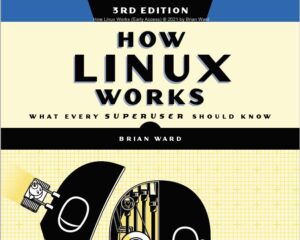The problem with a lot of technical texts aimed at beginners is that the author has forgotten what is was like to be a novice and what concepts were unfamiliar at the beginning of the road toward expertise. (I am talking specifically about my college calculus text here.) Thankfully, author Brian Ward doesn’t make this kind of mistake in his comprehensive How Linux Works 423-page tomb.
 Ward says readers only need a general familiarity with computer concepts to understand the book, and he stays true to his word. The book does a good job with Linux basics and also includes some nice-to- know information that day-to-day users will likely find to be just FYI. Case in point: Explaining where and how devices are named. Most newer brands of Linux automatically mount drives and devices. So the typical user needn’t worry about where they are in the file hierarchy.
Ward says readers only need a general familiarity with computer concepts to understand the book, and he stays true to his word. The book does a good job with Linux basics and also includes some nice-to- know information that day-to-day users will likely find to be just FYI. Case in point: Explaining where and how devices are named. Most newer brands of Linux automatically mount drives and devices. So the typical user needn’t worry about where they are in the file hierarchy.
Many typical readers of earlier HLW editions likely obtained the book for its explanations of shell scripting. The book dives deeply into the subject which is the method by which programmers really control a machine. HLW also contains tons of stuff on networking for those who need this kind of background.
This third edition adds new material found in the chapters on virtualization. Ward explains that the discussion here primarily focuses on deciphering terminology. Because containers have become more widely used since the second edition was published, they also get explained–they basically consist of several Linux features and make heavy use of cgroups, also treated in this third edition. Other subjects getting attention are the Logical Volume Manager, the journald logging system, and IPv6 in the networking material.
Because most Linux utilities and many applications on Linux systems are written in C or C++, the book includes a section on program development and on compiling software from C source code. And though most Linux distributions do not include the tools necessary to compile C code, these tools are widely available on open-source sites.
All in all, the the third edition of How Linux Works is a good introduction to Linux that also is organized such that readers can flip through and go as far into a subject as necessary to answer questions at hand, skipping the more extensive explanations that aren’t crucial for their current topic of interest. In that regard, the book is a nice reference to have on the bookshelf.






Leave a Reply